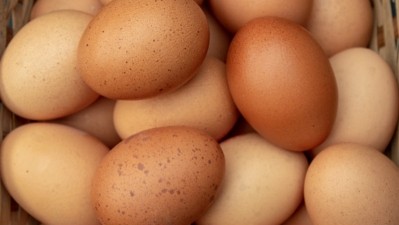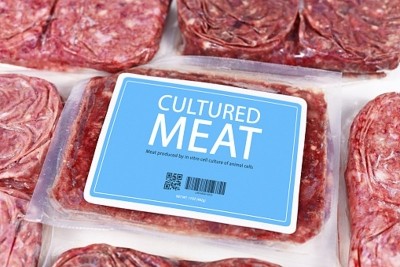Show me the money: China’s New Protein sector hopeful to get its own Green Financing system

There has been much hype in recent months after Chinese President Xi Jinping made a specific mention of alternative protein in relation to food security and feeding the country’s population of 1.4 billion and growing.
This in itself is good news for local consumers knowing that solutions against food insecurity are being developed – but for the New Protein sector, this means so much more not just because of this recognition, but because of the new opportunities that have opened up from development, marketing and funding perspectives.
“Previously, there was a lot of talk about how protein security was becoming more important, but President Xi had not yet specifically mentioned plant-based or cultivated products, just that we should use ‘all resources’ to make new protein – so people were just not clear about what this ‘all resources’ meant, as well as how and what we were supposed to do,” China Plant Based Foods Alliance (CBPFA) Secretary General and Head of China’s AgFood Future movement Ryan Xue told FoodNavigator-Asia.
“So for the past 2 years since food security first came up as an issue, everyone was confused and it was even tougher convincing others outside of the industry about New Protein because these were not specifically mentioned and no specific directives were given – in China, top-down directives are very important to get things going – so though progress was there, things were not as fast as they could be.
“This was especially obvious in terms of financing and investment – so far a lot of progress that has been made has been with private funding, not public. So President Xi’s highlighting of the sector will mean a specific directive for the government to speed things up and the public sectors to make more investments in this area – which would be a huge gamechanger for the whole industry.”
CPBFA led the national movement to bring together alternative protein and traditional protein stakeholders, along with government agencies, nutritionists and other stakeholders; with one of its major achievements being the publishing of extremely industry-friendly national plant-based product standards in December 2020.
“We initiated and coordinated five dialogues between the Ministry of Agriculture and Rural Affairs (MARA), National Health Commission (NHC) and State Administration for Market Regulation (SAMR) on protein innovation from last March - this led to the inclusion of cultivated meat, plant-based eggs, and other future foods in the government’s newest five-year plan [mentioned] by President Xi,” he added.
“It is also important to note that a lot of investment in China is currently flowing towards low-carbon emissions due to China’s 2060 carbon neutrality goals – the thing is, a lot of focus for this is going to the manufacturing sector, but much less to agrifood production, although this is very obviously the foundation of socioeconomic growth for the country.
“China is working towards the carbon neutrality via what we call green transformation – and we are already seeing sectors such as the energy sector getting a lot of support such as strong green financing systems already in place. So energy start-ups are able to get green funding, and the investors get great green credits, so even more loans can be gotten from big banks, efficiently helping the sector to grow.
“And that’s what we are looking forward to happening also for the alternative protein and agri-food sector here in China, because without that so far it’s really been a bit of a no-brainer that the big banks are just overlooking agrifood and protein for financing.”
AgriFood Future has researched and developed different models to quantify the green efforts and potential credits to be gotten from the entire agri-food chain, from growers to manufacturing to consumers.
“We do see there is a system there, and now with President Xi’s acknowledgement of the sector, it does seem to be a good opportunity to build on this so that firms involved in New Protein will be able to have a robust financing system based on sustainability,” he said.
“We really do want this to work so that there can be more public financing for this sector – not just sending it all to energy or transportation, as these sectors already have way too much money to work with [compared] to us.”
Change is ‘inevitable’
Whilst President Xi’s statement was good news for the sector, it was also not surprising based on current protein requirements and the national carbon neutral ambition, according to China’s leading cultivated meat company CellX.
“The recognition of alternative protein was inevitable, given the government’s sustainability ambition to be carbon neutral, as well as the need to ensure food security for the Chinese public,” CellX Founder and CEO Ziliang Yang told us.
“Carbon emissions from the agrifood sector make up 15% to 27% of all emissions, and alternative is certainly the way to go forward in terms of reducing it.
“In terms of food security, China is importing a lot of meat products and soy needed for animal feed – China does not produce much soy and the majority of its imports come from the the US and Brazil.
“In addition to this, China needs to take into account the potential geopolitics concerns with countries such as the US and others, which makes it even more crucial for us to have our own stable supply chain of protein.”
Yang concurred with Xue that the president’s statement could give the sector the crucial boost it needs, given the way systemic change works in the country.
“China is a policy-led country, so President Xi’s endorsement is definitely crucial as it represents a strong signal from the top of the government for the authorities to come up with strategies to develop this sector,” he said.
“So policies are one major area that will see improvement, and apart from that we also expect to see a lot more investment from public funding and VCs.“Importantly, we also believe this will draw many more talents that would traditionally look at the biotechnology industry into this sector, as well as the entry of more companies into this space which will help with industry growth and building the necessary supply chain infrastructure.
“This will also serve as a signal to consumers, particularly when it comes to having state media presenting a government-led perspective on these products – it is still early days for this but later on down the road, this aspect will be very important to shaping consumer perspective and mindsets.”
CellX hopes to get regulatory approval for its cultivated meat products within the next two to three years.
“China will usually look at what other countries are doing when it comes to novel sectors like this, so if multiple markets like Singapore, the United States and the European Union have approvals in place, the government will be more comfortable to pass approvals as well,” said Yang.
“Singapore may be the first market [to approve a cultivated meat product for food use], but eventually China is likely to surpass Singapore in terms of approvals and the number of cultivated products in the market – however, this will take time as there is a gradual process that needs to be completed first.
“That said, this is the beginning of more support for the sector in terms of policy and other aspects, and we do expect things to move faster now – when the Chinese government says something and sets it in its sights, things will move very fast.”






















